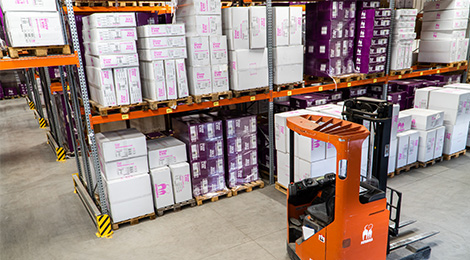Excess inventory, overstocking or “dead” inventory is when companies have far too much inventory on hand than what they need. This typically occurs when the amount of inventory on hand exceeds the level of consumer demand for those products. Overstocking can happen for various reasons including inaccurate demand predictions, seasonal changes in trends, poor procurement or inventory management practices and more. To prevent excess inventory from occurring or to solve the issue, it’s key to be able to seamlessly and accurately keep track of inventory levels for any given product within a warehouse.
Why Excess Inventory is a Problem
Excess inventory is a problem that’s often misunderstood by companies. To compensate for poor inventory management, companies make the mistake of overstocking out of fear they won’t fill orders. They may be under the impression it’s better for them to overprepare than underprepare since they’ll eventually sell off all the inventory anyway. This, however, is the wrong approach, as overstocking can be as big of an issue as understocking. Excess inventory can result in an excessive amount of overhead costs which can be detrimental to your company’s bottom line.
The Costs of Excess Inventory
The costs of excess inventory are excruciating. One expert suggests that for every dollar of excess inventory that your company possesses, you can incur roughly 20-30% of extra costs. Additional costs from excess inventory occur in the following ways:
Carrying Costs
To hold inventory, your company will pay storage fees, taxes, insurance, labor costs and more. These costs become especially overbearing if your company carries a high amount of inventory as you will have to expand and pay extra for larger storage spaces. Similarly, having a high cost of inventory means that you will need to purchase insurance coverage at higher rates and pay more in taxes for your inventory.
Product Obsolescence
Excess inventory increases the chances of inventory losing its value or becoming completely obsolete. Obsolescence happens due to changes in demand for a product, due to product going out of style or out of season, and when dealing with perishable items which can sometimes be difficult to predict. Your company could also stop promoting a certain product due to a shift in their marketing strategy. Even with a comprehensive demand planning strategy, you can never know for certain what the future holds for your products.
Item Depreciation
When goods are left on the shelves for weeks, months and years on end they will eventually begin to lose their value due to natural wear and tear. Eventually, they become “dead stock” and have to be written off at the end of the year.
How to Manage Excess Inventory: Real Life Example
Say for instance that your company is struggling to maintain all your existing inventory at your current warehouse and plans to move in the upcoming months to a larger facility that can fit their inventory. The cost for them to move into this new building would be $100,000. Not to mention, your company’s monthly rent would go up significantly when leasing a larger warehouse. Before signing the lease, your company makes a decision that would help them save thousands.
Through the help of experts and robust software, you were able to identify the items that were failing to contribute to revenue or were taking up too much space in your warehouse. After the analysis, you decided to get rid of these items entirely. As a result, you have no need to sign a new lease and you’re able to extend your existing one instead.
The analysis helped you:
--> Save $100 000+ on moving costs
--> Save thousands on monthly rent costs
--> Save on insurance, tax and other overhead costs for products that were not contributing to revenue
The right software system can help your business manage inventory by providing robust reports on inventory performance, tracking lot numbers to help eliminate the risk of obsolete inventory, automate the ordering process by setting inventory min and max levels, and more. These types of systems are significantly less than the costs of moving and provide future cost savings with even more functionality to manage inventory and other aspects of your business.










